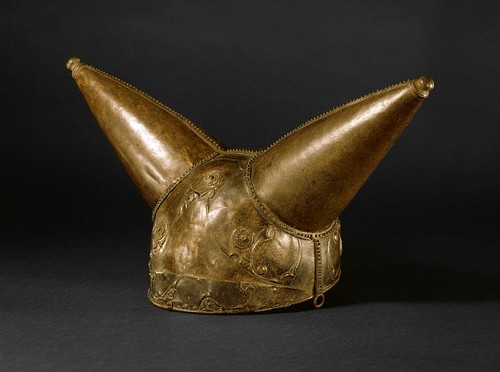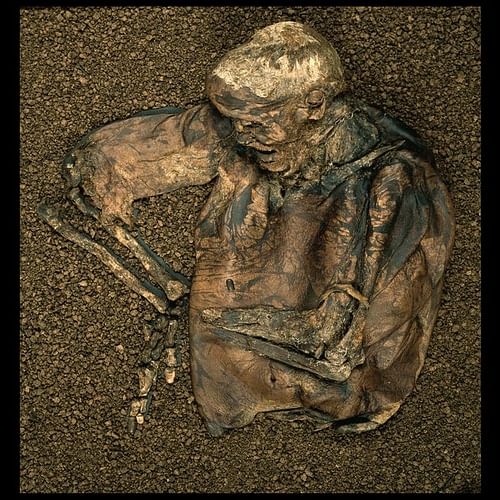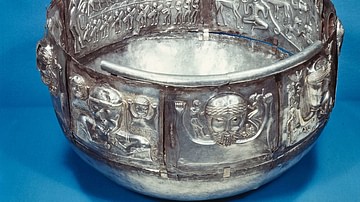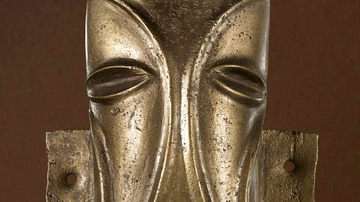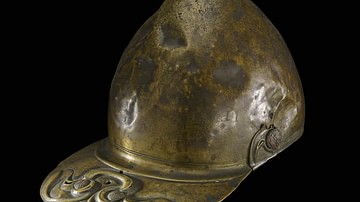
Druids were a class of individuals in ancient Celtic cultures known for their great wisdom and knowledge of traditions. Not only priests who managed all religious rituals such as sacrifices (including humans), druids were able to give practical help by interpreting events of nature, divining the future as soothsayers, and making medicinal potions, especially using sacred plants like mistletoe.
In addition, Druids were repositories of the community's history and may also have been required to cast taboos (or, less accurately, spells) on people, ensuring compliance to the society's rules. Evidence that women were druids in antiquity is scarce, as is information on druids in general which has led to much speculation and often fanciful assumptions in later periods. Druids and Celtic religion declined following persecution by the Romans in the 1st century CE and then the arrival of Christianity across Europe.
A Note on Sources
Not a great deal of ancient written material is available concerning druids, and what there is comes either from Greek and Roman authors or medieval literary sources such as Irish mythological poems. The consequences of this are a lack of consideration for Celtic cultures other than in the British Isles and Gaul, and an absence of information prior to the Roman period when druidism was already in decline. Another problem is the confusion and inappropriate comparisons made by ancient writers between druids and other men of wisdom in other cultures such as the magi of Persia, Greek Pythagoreans, and Indian ascetics. Nevertheless, works such as the Gallic Wars by Julius Caesar (c. 100-44 BCE) provide invaluable information on this mysterious class of priests who left no information themselves on their beliefs and practices.
The Status of Druids
The word druid derives from druides/druidae in Latin, druad in Old Irish, and dryw in Welsh. Few scholars today agree with the traditional view that the name derives from a combination of two or more Celtic words meaning 'knowledge', 'oak' or 'knowledge of the oak' (dru-vid-es). As repositories of the community's accumulated knowledge - passed on orally by elders to novices - druids had a high status in Celtic societies. According to Julius Caesar, they did not pay taxes and were not obliged to perform military service. Some likely advised rulers in religious affairs and presided over judicial matters such as criminal cases, inheritance disputes, and conflicts over boundaries. Druids also oversaw the taking of oaths by warriors to demonstrate their loyalty to a leader. Druids may have emphasised their separate status with their long white robes and perhaps, too, with unusual headgear. Archaeological finds of headgear which obviously do not have any military function may be those once worn by druids. Such headgear often consists of bronze pieces in leaf form, cones or disks, and sometimes with horn or antler attachments.

It is unclear if druids had their own internal hierarchy beyond the distinction between the experienced and the novice, but Julius Caesar does note that in Gaul a chief druid was elected and held the office for life. Druids had sacred places where they gathered at annual events. Caesar mentions the area of Carnutes in central France, and we know that Mona (Anglesey, Wales) was considered a holy island for druids.
Novices spent some 20 years learning the oral knowledge of their master druids. The emphasis on oral learning may have reflected a desire to keep the druids' knowledge exclusive to the initiated rather than because of a lack of literacy. There may have been some female druids but there is no clear evidence for them except in later sources and then usually only in Gaul and Ireland. However, as the historian Chiara Tommasi notes, these sources "are of doubtful reliability and should probably be dismissed" (Bagnall, 2329). There is evidence of Celtic female warriors, however, and, of course, an absence of evidence can work both ways - there is no record of women not being permitted to become druids.
The Role of Druids
Druids were regarded as intermediaries with the gods and so their offerings and sacrifices could keep these powerful deities content and so diminish the trials they regularly sent for humans. As Julius Caesar noted:
The Druids officiate at the worship of the gods, regulate at public and private sacrifice, and rule on all religious questions. Large numbers of young men flock to them for instruction, and they are held in great honour by the people.
(Gallic Wars, VI:13)
The power of the druids and their monopoly on religious ceremonies meant that anyone who disregarded their rulings risked being excluded from rituals, which, in effect, made that person unclean and an outsider within the community. A druid could impose taboos or prohibitions on individuals known as geissi (or geis) in Ireland or simply spells elsewhere (even if this term is perhaps not ideal because of its connotations of magic). Such taboos could be mundane such as not eating a particular type of meat, but if they were not obeyed, it was believed death or misfortune for the perpetrator and their relations would soon follow.
Druids were also called on to explain and control supernatural forces and impressive episodes of natural phenomena. In this capacity, druids also claimed to foresee the future and so they were meant to correctly interpret omens. For this reason, druids were keen astronomers and experts in the use of calendars. Roman writers sometimes give fortune-telling duties to a separate class of individuals, the seers. Another figure sometimes equated with druids is the fili or learned poet-historian of ancient Ireland. Besides composing eulogies and invectives, the fili also passed on orally to the next generation the folklore of the community and were involved in some way with law codes and prophecy. Whether druids, seers, and fili were entirely separate individuals or could be found in a single individual is still much debated by scholars.
Another function of druids was to prepare potions with which they could reinforce their taboos and spells. The use of objects to cast spells or curses on enemies was a common enough practice throughout antiquity in many cultures. However, the druids' association with magic most likely derives from the demonisation of pagan practices and practitioners by medieval Christian writers. A much more likely skill is knowledge of natural medicines and remedies for common ailments. The druids collected such plants as mistletoe and often did so at night, at least according to Pliny the Elder (23-79 CE) in his Natural History. Pliny describes druids going on nocturnal trips to sacred groves to cut sprigs of herbs and plants with their golden sickles, an image that has certainly stuck in the popular imagination.
Mistletoe was particularly important to druids as it was a traditional symbol of life and fertility because it is a perennial plant and maintains its leaves even when its host tree has lost all its foliage in winter. As Pliny describes here:
The druids….consider nothing more sacred than mistletoe and the tree that it grows on, so long as it is oak…Below the tree they prepare a sacrifice and religious feast, and bring two white bulls whose horns are bound for the first time. A priest clad in white climbs the tree, cuts the mistletoe with a golden hook and catches it on a white cloak. Victims are sacrificed with prayers to the god to render this offering propitious.
(Natural History, 16: 95)
Pliny goes on to mention that the timing of rituals and the gathering of mistletoe was very important, even related to specific days in the calendar:
[Mistletoe] is gathered with a great deal of ceremony, if possible on the sixth day of the moon…They choose this day because, although the moon has not yet reached halfsize, it already has considerable influence.
(ibid, 16:249)
Rituals, Sacrifices & Burials
Druids presided over all manner of religious ceremonies in Celtic communities. Offerings were made at natural sites of importance such as rivers, springs, lakes, and bogs. Hilltops and sacred groves of trees, especially oaks, also hosted rituals. All of these places were considered meeting places between the physical and supernatural worlds. Prayers were said, and food, weapons, and precious goods ritually offered to the gods.
After a battle, captured enemy warriors were sometimes sacrificed to the gods. Animal and human sacrifices were either given as a great gift and meant to appease the many Celtic deities or were killed for the purpose of divination. Victims, both animal and human, were carefully watched as they died because druids attempted to interpret their death throes, spurts of blood, or even the way they fell to the ground in order to throw light on the future. We know of one such possible victim, known as Lindow Man, discovered at Lindow Moss, a bog near Cheshire in England. This youth illustrates the care which was taken with victims before their final journey to the Otherworld. Lindow Man lived no later than the turn of the 1st and 2nd century CE, and he had manicured fingernails, he was in good health, and in his stomach was mistletoe and burnt oatcakes. He died in what seems to have been a standard manner for ritual killings: hit on the head, strangled, and had his throat cut. The corpse was then put in water for some time and then buried.
Druids would also have presided over more peaceful funeral ceremonies. Archaeological evidence is strong that the Celts believed in an afterlife and druids may have propagated the idea that the soul left the body only to reappear in another after death (although this belief could have been perpetuated by rulers eager to give their warriors courage in battle). Burials such as those of great warriors and rulers saw individuals interred along with their daily possessions, weapons, and precious objects like gold jewellery. Alternatives to burial were cremations and excarnations where the corpse was left exposed to the elements for a period and the bones then either buried or kept for future religious ceremonies.
Decline
The druids went into decline during the rise of the Roman Empire, perhaps because they were so important as a binding force to the cultures the Romans were trying to displace. Another reason was the Roman distaste for human sacrifice, despite their love of blood sports and graphic executions. A third reason was the ideological clash, with Rome being a materialistic and hierarchical culture and that of the druids being a spiritual and morally-centred one with a belief in collective ownership. Several emperors made attempts to eradicate the druids altogether, notably, Tiberius (r. 14-37 CE) and Claudius (r. 41-54 CE). In 59 CE the druid centre on Anglesey was systematically attacked by a Roman army.
The next and more widespread threat to druids came from the Christianisation of Western and Central Europe from late antiquity right through the medieval period. Druidism did make something of a comeback from the 17th century CE onwards, although how much common ground there is between ancient druids and their more modern counterparts is a moot point, and not one much entertained by serious scholars of the ancient Celts. That period also saw the beginning of studies in druids and Celts, leading to some often fanciful but enduring claims such as the idea that megalithic monuments around Europe were the temples of druids even if they did not appear in the historical record until thousands of years later.
